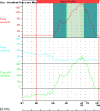Urological management of the patient with traumatic spinal cord injury
- PMID: 20112474
- PMCID: PMC5052502
Urological management of the patient with traumatic spinal cord injury
Abstract
Traumatic spinal cord injury is a very comprehensive subject, debated in many scientific papers. It interests various medical specialties, but also other sciences, like economy, psychology or social science. The patient having a motoric disability, with sphincter troubles and other associated pathologies secondary to a traumatic lesion of the spinal cord, represented a social problem from the antiquity. The first centers dedicated exclusively to these patients were established during Napoleon. Nevertheless, a systematic approach to these patients was not possible before the end of the Second World War, when scientific and economic development made possible the establishment of medical facilities specialized in the complex evaluation and treatment of patients with spinal cord injury (SCI). Between the two world wars, physicians were concentrating their efforts to keep these patients alive, considering that the main target was to treat or prevent complications which could be fatal to the patient. The first scientific papers underlining the essential place of lower urinary tract disorders in the vital prognostic of the SCI patient are dating back to this time. In modern times, the target for every patient with SCI should be social reinsertion and obtaining as much autonomy as possible. The physician needs to tune up his treatment according to this factor. The continuous evolution of medicine, alongside with technical progress and the development of modern social security have created the premises for a real quality of life of the paraplegic or even quadriplegic patient. The lower urinary tract becomes not only a key for prolonged survival, but also one of the most important elements for social reinsertion.
Figures
Similar articles
-
Spine update. Urological management in patients with spinal cord injuries.Spine (Phila Pa 1976). 1996 Jan 1;21(1):128-32. doi: 10.1097/00007632-199601010-00028. Spine (Phila Pa 1976). 1996. PMID: 9122753 Review.
-
Urodynamics in patients with spinal cord injury: A clinical review and best practice paper by a working group of The International Continence Society Urodynamics Committee.Neurourol Urodyn. 2018 Feb;37(2):581-591. doi: 10.1002/nau.23369. Epub 2017 Aug 1. Neurourol Urodyn. 2018. PMID: 28762566 Review.
-
Dysfunction of lower urinary tract in patients with spinal cord injury.Handb Clin Neurol. 2015;130:247-67. doi: 10.1016/B978-0-444-63247-0.00014-6. Handb Clin Neurol. 2015. PMID: 26003248 Review.
-
Quality of life after active urological management of chronic spinal cord injury in eastern Taiwan.Eur Urol. 1998;34(1):37-46. doi: 10.1159/000019676. Eur Urol. 1998. PMID: 9676412
-
Morbidity of urodynamic testing in patients with spinal cord injury: is antibiotic prophylaxis necessary?Spinal Cord. 2007 Dec;45(12):771-4. doi: 10.1038/sj.sc.3102114. Epub 2007 Aug 21. Spinal Cord. 2007. PMID: 17710104
Cited by
-
Cell cycle activation contributes to increased neuronal activity in the posterior thalamic nucleus and associated chronic hyperesthesia after rat spinal cord contusion.Neurotherapeutics. 2013 Jul;10(3):520-38. doi: 10.1007/s13311-013-0198-1. Neurotherapeutics. 2013. PMID: 23775067 Free PMC article.
-
Dementia, Depression, and Associated Brain Inflammatory Mechanisms after Spinal Cord Injury.Cells. 2020 Jun 8;9(6):1420. doi: 10.3390/cells9061420. Cells. 2020. PMID: 32521597 Free PMC article. Review.
-
Perioperative Complications and Anesthesia Practices in Managing Patients With Quadriplegia Undergoing Surgery: A Systematic Review.Front Med (Lausanne). 2022 Mar 28;9:852892. doi: 10.3389/fmed.2022.852892. eCollection 2022. Front Med (Lausanne). 2022. PMID: 35419369 Free PMC article.
-
Anti-paralytic medicinal plants - Review.J Tradit Complement Med. 2017 Mar 9;8(1):4-10. doi: 10.1016/j.jtcme.2017.02.001. eCollection 2018 Jan. J Tradit Complement Med. 2017. PMID: 29321983 Free PMC article. Review.
-
Delayed microglial depletion after spinal cord injury reduces chronic inflammation and neurodegeneration in the brain and improves neurological recovery in male mice.Theranostics. 2020 Sep 14;10(25):11376-11403. doi: 10.7150/thno.49199. eCollection 2020. Theranostics. 2020. PMID: 33052221 Free PMC article.
References
-
- Spinal Cord Injury Resources. 2002
-
- Sugarman B. Medical complications of spinal cord injury. Quart J. Med. 1985;54:3 . - PubMed
-
- Societe Internationale Francophone dۥUrodynamique Les troubles vesico-sphincteriens des traumatises blesses medullaires. Raport du XIX Congres, Marrakech. 1996 Avril
-
- Guyton A.C. Fiziologie. Ediţia a V-a. Editura Medicală Almatec; 2008. pp. 415–425.
-
- Iliescu L. Urodinamica. Editura ARC; 2000, 2003.
Publication types
MeSH terms
LinkOut - more resources
Full Text Sources
Medical


